#Parasitic plants
Explore tagged Tumblr posts
Text
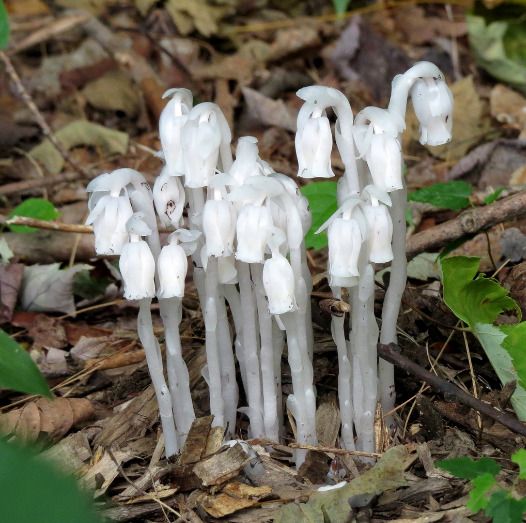
Ghost Plant (Monotropa uniflora)
Family: Heath Family (Ericaceae)
IUCN Conservation Status: Unassessed
Over 80% of plants form mutualistic relationships with soil-dwelling fungi, linking their roots to the fungus' hyphae and providing photosynthetically produced sugars in exchange for hard-to-access nutrients that the fungus takes in from the soil. The Ghost Plant, which is found mainly in temperate shady forests across much of Asia and the Americas, also connects its roots with the hyphae of fungi (specifically members of the family Russulaceae,) but contributes nothing; it is a parasite, stealing nutrients not only from its host fungus but also from other plants (particularly birches) that its host is also connected to. Living entirely on stolen nutrients means that Ghost Plants have no need to carry out photosynthesis, and as such they lack the green pigment chlorophyll that almost all plants use to absorb sunlight, giving them their namesake eerie white appearance (although on occasion pale pink individuals are recorded) and allowing them to survive in dark, shady conditions that other plants are unable to colonise. Ghost Plants bloom rarely and unpredictably (as they do not photosynthesise they have no need for aboveground leaves or stems when not reproducing, but apparently develop stems and flowers rapidly during periods of wet weather following prolonged dry conditions,) baring a single bell-shaped white flower with a black-and-yellow interior that attracts various species of bees and flies. Following pollination the plant's tiny seeds are forced through gaps in its petals and carried away on the wind, remaining dormant in the soil they settle on until they detect a suitable host fungus growing nearby.
——————————————————————————
Image Source: https://www.inaturalist.org/taxa/49477-Monotropa-uniflora
#Happy Halloween!#Ghost Plant#ghost plant#botany#biology#plant#plants#wildlife#Asian Wildlife#North American Wildlife#parasitic plants#parasitic plant#angiosperms#flowering plants
270 notes
·
View notes
Text
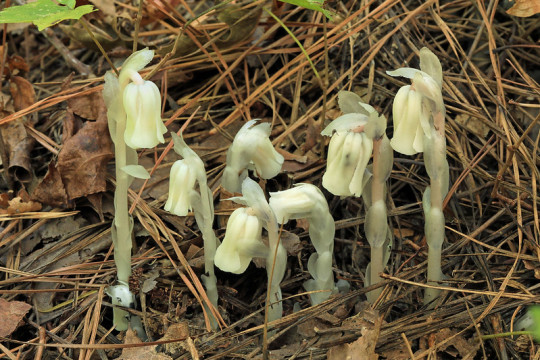
Ghost plants (Monotropa uniflora) growing in Stone Mountain, Georgia, USA
by Alan Cressler
#ghost plant#parasitic plants#plants#monotropa uniflora#monotropa#Ericaceae#ericales#plantae#flora: usa
201 notes
·
View notes
Text

One of the weirdest plants I've ever seen is Corynaea crassa, which a colleague found when we were on a trip to Cerro de la Muerte in Costa Rica. It's a parasitic plant with a large underground structure and these weird flowering structures aboveground, with no photosynthetic leaves or stems. In the Andes, this plant is sometimes used as a male aphrodisiac (supposedly it doesn't work for women). It seems to like high elevations, but has multiple hosts it can parasitize.
#Cyrnaea crassa#balanophoraceae#some people call this 'peruvian viagra' apparently#parasitic plants#plants of costa rica
51 notes
·
View notes
Text



Corpse Lily (Rafflesia arnoldii) | Equator's Wild Secrets: Borneo & Sumatra
At three feet across, Rafflesia is the largest single flower in the world. It's also called The Corpse Flower, due to its deeply pungent smell and blotchy petals resembling rotting flesh. Along with its odour radiating a subtle heat, it's irresistible to the flies which pollinate it. It's a parasitic plant as it has no roots or leaves. It grows hidden inside its host, only becoming visible when buds emerge and develop into giant fleshy flower petals.
#documentaryedit#natureedit#halloweenedit#parasitic plants#Corpse Flower#aka Corpse Lily#plants#flowers#🌱#gifs#👻#PFA orig#src documentary#📺 Equator's Wild Secrets (2019)#narrated by Stefan Booth
17 notes
·
View notes
Text

Curiosity January - Day 11 - Parasite
#image description in alt#curiosity january 2025#art challenge#my art#illustration#linogravure#linocut#printmaking#outer wilds#outer wilds art#curiosity cabinet#oddities#anglerfish#wet specimen#symbiosis#parasitic plants
9 notes
·
View notes
Text

I am thinking about sandfood again.
From Wikipedia:
Pholisma sonorae, commonly known as sandfood, is a rare and unusual species of flowering plant endemic to the Sonoran Deserts to the west of Yuma, Arizona in the California Yuha, Mojave Desert and Colorado Desert, and south in the Yuma Desert, where it is known from only a few locations.[1]
Description
Pholisma sonorae is a perennial herb which grows in sand dunes, its fleshy stem extending up to two meters (six feet) below the surface and emerging above as a small rounded or ovate form. It may be somewhat mushroom-shaped if enough sand blows away to reveal the top of the stem. It is a parasitic plant which attaches to the roots of various desert shrubs such as wild buckwheats, ragweeds, plucheas, and Tiquilia plicata and T. palmeri to obtain nutrients.
As a heterotroph, the Pholisma sonorae plant lacks chlorophyll and is grayish, whitish, or brown in color. It has glandular scale-like leaves along its surface. The plant obtains water not from its host plants, but through stomata in its leaves.[1] The plant blooms in centimeter-wide flowers which are pink to purple in color with white margins.

#plants#plantblr#pholisma#flowers#parasitic plants#trypophobia cw#just in case#I love parasitic plants so much they're always really weird and vaguely-upsetting#Weird alien pod wearing a flower crown#It's in the same family as borage!
276 notes
·
View notes
Text
What if?
Wings of Fire infection/curse AU where the infection is related to the dragons' tribe element.
I see a lot of infection AUs so i wanted to get on the train with my own idea even tho its most definitely not original lol. Here's what I mean tho.
(TW for semi-graphic descriptions of the following: mind hijacking parasitic infection, muscle dystrophy i think its called, stomach parasite, parasitic spores, fatal insomnia, exhaustion, and body decomposition, body horror in general)
For SkyWings, the sky is their element. Infected dragons' scales turn sky blue, starting around the infection site and first attacking the legs in most cases. They become afraid of heights and afraid of landing due to their nonwing limbs starting to fail them. Their fire cools and weakens until all that comes out is blue, dusty smoke, full of spores to infect more dragons. One day, they have an unexplainable urge to fly to the highest point possible...but they are still terrified to land due to their weakened limbs, so they fly around until their lungs and chest muscles give out and they crash land from exhaustion. Once landed and dead----at this point their scales are almost if not entirely blue---the blue, mossy plant sprouts from their body, beginning from the site of infection. If the disease is transmitted through bite, the spread starts there; if the spores are breathed in, it starts from the throat just behind the chin.
For LeafWings, it's plants. Leaves start to grow where they don't normally. Moss covers the dragon. Tails and horns branch out and flower, sending out contagious spores. Dragon movements become sluggish and robotic. At death, they lie down or collapse into the dirt and take root, growing a new plant.
For MudWings, it's less obvious. In earlier stages, the dragon appears distant, and wants less to do with their siblings. Their mood changes. They complain of stomach pain and bloating. They become lethargic for a while, then suddenly extremely anxious. Finally, they go dig a hole and crawl into it, covering themselves with dirt and mud. Soon paralyzed, the dragon will not move until death. Their body sinks into the ground, and a patch of the swamp dwelling infectious plant strain grows unassumingly over top, having taken root in the dragon's abdomen.
In NightWings, it starts with the loss of sleep. The first symptom is that no matter how hard a dragon tries, they cannot sleep. After several days of remaining awake, the infection starts to shpw itself on their scales. Their scales lighten, turning silvery pale like a moonbathed NightWing egg. Hallucinations. Sense of impending doom. Visions that are more like a nightmare, as if the dragon is really there witnessing the worst. Depending on powers, the symptoms are different. In later stages, infected dragons' scales glow in the dark, as do the plants that sprout from their decomposing body after they die.
Cases have not yet been found in SandWings. Their habitat is not suitable for any species of this parasite.
RainWings lose their color change ability in patches, green or white spots growing on their scales until theyre covered. At the last stage, they typically hang from trees by their tails. The plant's branches hang down like vines, and any dragon who walks through the curtain of green is likely doomed.
A SeaWing slowly gets covered in algae. At last, they climb onto the beach and die, and the flowers bloom.
In IceWings, it is rare, but possible. The plant stays deep inside, to avoid the cold of the dragon's habitat. The dragon's limbs become paralyzed one by one, beginning with the wings. Sometimes, in the far north, the plant can freeze and be killed before it kills the dragon, leaving them partially paralyzed; but in the lower arctic tundras, in the summer, it will sprout and kill them.
In HiveWings, it's a lot like ant fungus. They act strange, expressing no emotion or reaction to those around them. Their connection to the othermind is severed; the only plant that controls their mind now is the disease. More often than not, they are executed before the plant can grow, but if they aren't, they will find a high place and then freeze like a statue until the sprout bursts out of the neck, throat, skull, eyes, of their still-standing corpse.
It's the same in SilkWings. Metamorphized Silks are typically immune, but larvae are not.
20 notes
·
View notes
Note
I'm taking the niche and running with it:
Thoughts on the genetically engineered vampire vegetables that have been proposed in the WFAO (Wizarding Food and Agricultural Organization)?
The general controversy surrounding them is blatantly fuelled by sanguivoriphobia.
Though any and all genetic engineering regularly falls under much more harsh criticism then innovations via more traditional methods this particular media frenzy has gone above and beyond the usual furore, despite the standardised seer regulations (introduced after the cane toad disaster) having been obeyed.
A concept of “monster plants” is clearly informing public view, which I’m sure you can immediately tell is fueled more by fear than logic.
Parasitic plants, on both other plants as well as fungi, are incredibly common in the natural world, as are carnivorous plants. Examples of the latter range from the common Venus Flytrap to the Southern Man Eating Pitcher.
The vegetables you mention, if they function as the early research seems to indicate, are in fact an innovation. They can utilise animal blood, a normal byproduct from both the food industry which would normally go to waste, in a productive way to enhance crop growth. It will not take blood away from the potions industry, no matter what some fear mongers may state, as the food industry produces a huge surplus, of which only a small percentage is required for potions making.
Normally, even when enchanted, no plant is capable of utilising blood as a fertiliser, due to high salt and metals content. However, the aforementioned genetic modifications, performed with the now standard transfiguration methodology, will enable the plants to successfully process the blood and the energy it contains.
In conclusion, though further testing will be necessary to ensure no cross-pollination with wild plants will occur, this appears to be a useful product that will fill a currently empty niche and utilises some interesting science to do so. However, whether they succeed in developing it further will depend on the court of public opinion and the degree of hysteria invoked by sanguivoriphobia in the media.
#magic academia#magic#worldbuilding#gmos#genetic engineering#parasitic plants#botany#lettie asks#bee’s fantastical facts
9 notes
·
View notes
Photo


Parasitic plant alert pt 1: dropping to my knees and screaming over a new-to-me mycoheterotrophic orchid species
64 notes
·
View notes
Text
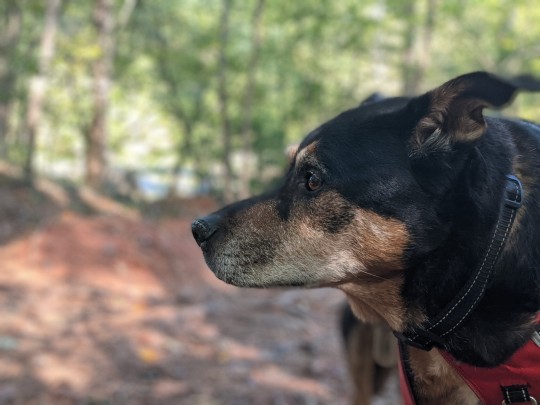
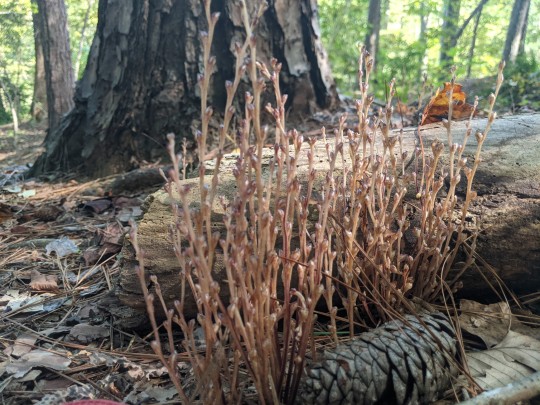

Woods walk with my good old man, & beech drops
#parasitic plants#beech drops#dogs#my dogs#hiking with dogs#forest floor#epifagus#epifagus virginiana
22 notes
·
View notes
Text
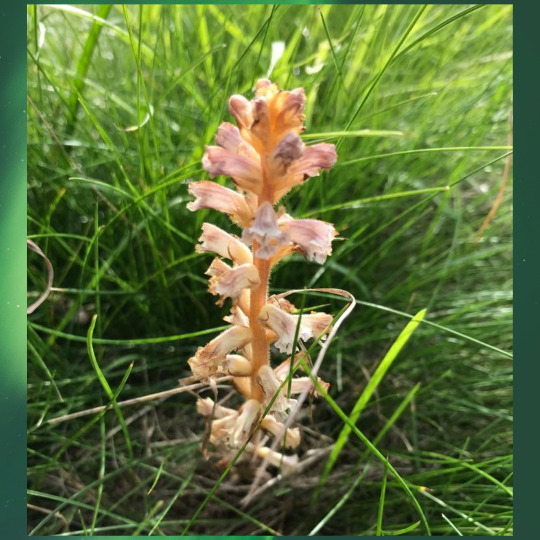
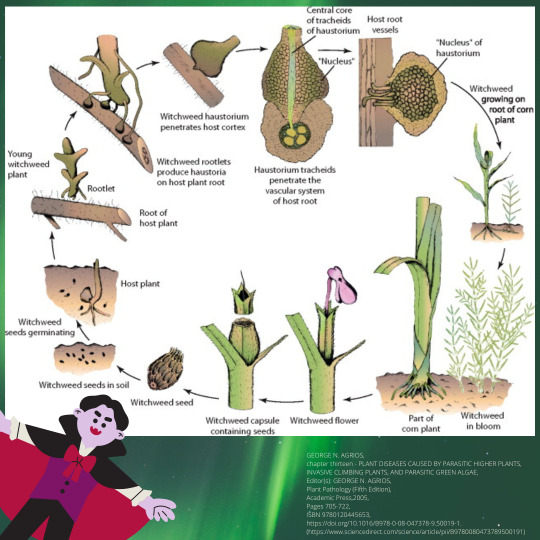
Imagine finding this unusual-looking wildflower in a summer meadow... One might assume, based on its mauve colour and upright growth, that it is a native European orchid. However, the truth is far stranger and more sinister - this odd wildflower is a "vegetable vampire" sucking the vitality from nearby plants!
The Common Broomrape (Orobranche minor) is a species of parasitic plant distributed across Europe. This plant is a "holoparasite", meaning it still has the basic anatomy of a plant (leaves, stems, roots, and flowers) but it lacks the ability to do photosynthesis and thereby generate its own energy for growth and reproduction. Most members of the Orobrancheae plant family are parasites, including the famous Striga genus which is a major pest of economically important crops such as maize and sugarcane in Sub Saharan Africa.
How does the "vampire" find its victims? Broomrape seeds can remain dormant in the soil of meadows, roadsides, and other environments for many years. If a preferred host plant starts growing near the dormant seeds, the seeds sense biological chemicals released by the potential host plants' roots. The Broomrape prefers Fabaceae (Pea family) and Asteraceae (Daisy family) plants. As the parasitic plant germinate and grows, it develops specialised roots called "haustoria" that physically penetrate the hosts' roots and extract nutrients from the host. The "vampire feeding" happens underground, so the Broomrape appears to be another innocent wildflower aboveground.
If you find a Broomrape anywhere in the UK or Europe, don't feel compelled to be a "vampire hunter" and destroy it. Please leave it be! The native European Broomrape is part of the natural ecosystem and it does not harm any crops or garden plants.
#broomrape#orobranche#striga#witchweed#parasitic#parasite#parasiticplant#orobanche#creepyplant#vampire#vampireplant#haustoria#parasitism#plantbiology#plantscience#botany#wildflower#katia_plantscientist
#katia plant scientist#botany#plant biology#plants#plant science#parasite#parasitic plants#parasites#parasitism#weird nature#wildflowers#thief#vampires#vampire#creepy nature#spooky nature#uk nature#plant photography#flowers
12 notes
·
View notes
Text

It's Tell a Friend Friday!
Please enjoy this photo I took of my very first gnome plant (Hemitomes congestum), a rare species that is likely a mycoheterotroph that parasitizes fungi, and is only found along the Pacific coast from British Columbia to California. Then tell someone you know about my work--you can reblog this post, or send it to someone you think may be interested in my natural history writing, classes, and tours. Here's where I can be found online:
Website - http://www.rebeccalexa.com
Rebecca Lexa, Naturalist Facebook Page – https://www.facebook.com/rebeccalexanaturalist
Tumblr Profile – http://rebeccathenaturalist.tumblr.com
Twitter Profile – http://www.twitter.com/rebecca_lexa
Instagram Profile – https://www.instagram.com/rebeccathenaturalist/
LinkedIn Profile – http://www.linkedin.com/in/rebeccalexanaturalist
iNaturalist Profile – https://www.inaturalist.org/people/rebeccalexa
Finally, if you like what I’m doing here, you can buy me a “coffee” at http://ko-fi.com/rebeccathenaturalist
#Tell a Friend Friday#gnome plant#plants#botany#rare plants#mycoheterotroph#heterotroph#parasites#parasitism#parasitic plants#nature
24 notes
·
View notes
Text



A PLANT THAT LIVES INSIDE OTHER PLANTS!!!!
Pilostyles is a bizare plant, you won't believe how weird it is! What does it look like? Well it when its not flowering its a weird fungal-like filamentous network inside its host plant, nothing outside its host.
but when it's time to flower...
... IT BURSTS FLOWERS THROUGH ITS HOSTS STEM LIKE THE ALIEN FROM ALIEN (1979)
it has completey lost all it's photosynthetic abilities, this is a puzzle then as we have no idea how it gets from one plant to another.
12 notes
·
View notes
Text
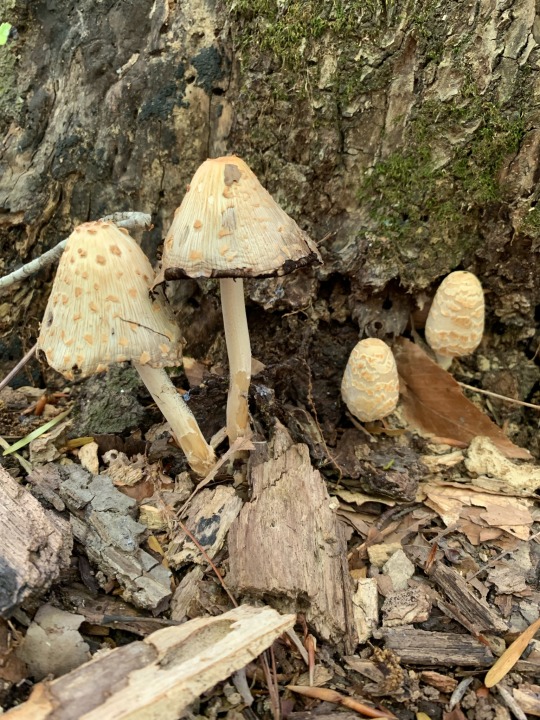
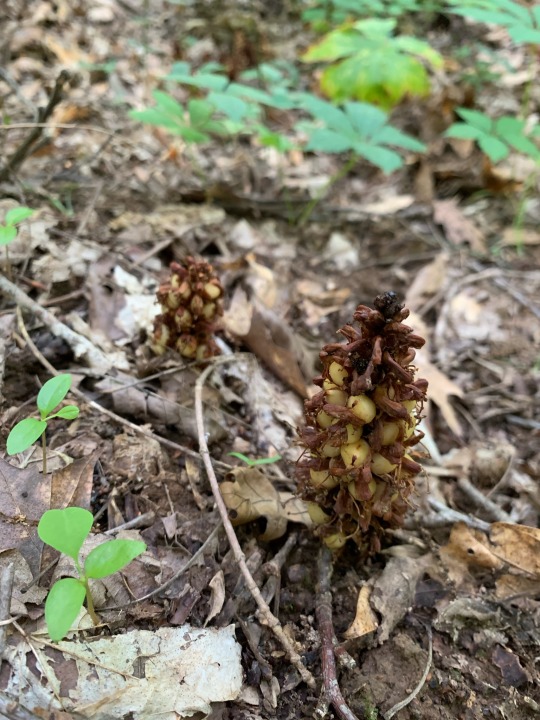
Coprinopsis and Conopholis americana
29 notes
·
View notes
Text

European Mistletoe (Viscum album)
Family: Santalaceae (Sandalwood Family)
IUCN Conservation Status: Least Concern
Native to western and southwestern Asia as well as almost all of Europe, European Mistletoe is a hemiparasite, meaning that in addition to producing nutrients independently through photosynthesis it also meets part of its nutritional needs parasticially, growing attached to the branches of trees and forcing its roots into the internal vessels of its hosts to steal nutrients and water. After settling and maturing on a host tree, members of this species produce tiny pale-yellow flowers between February and April (with each individual plant producing either pollen-producing "male" flowers or seeds-producing "female" flowers,) and after being pollinated by small insects "female" flowers develop into round, typically white berries (although a small number of individuals instead produce yellow berries.) Unlike many plants within its range, European Mistletoe bears fruit during the winter (possibly as an adaptation to avoid having to compete with fruit-bearing host trees) and as such while the berries of this species are poisonous to most mammals many birds rely heavily on them as a winter food source, carrying the seeds within them away from their "mother" to allow them to spread to new trees. Each berry contains a single seed surrounded by an extremely sticky pulp, and after being swallowed and eventually excreted in a bird's droppings this pulp allows the seeds to adhere to branches, where they will eventually germinate, force their way into the nutrients-filled internal vessels of their host and begin their development into adulthood.
--------------------------------------------------------------------------
Image Source: https://www.inaturalist.org/taxa/57512-Viscum-album
#European Mistletoe#mistletoe#plant#plants#botany#biology#wildlife#Asian wildlife#European wildlife#parasitic plant#parasitic plants#hemiparasite#hemiparasites#christmas#flowering plant#flowering plants#angiosperm#angiosperms
6 notes
·
View notes
Text

Rafflesia (Rafflesia tengku-adlinii) flower - Nick Garbutt
#Rafflesiaceae#rafflesia#rafflesia flower#flower#red flower#parasitic plants#plants#botanical#botany#tropical plants#tropical flowers#nature
9 notes
·
View notes